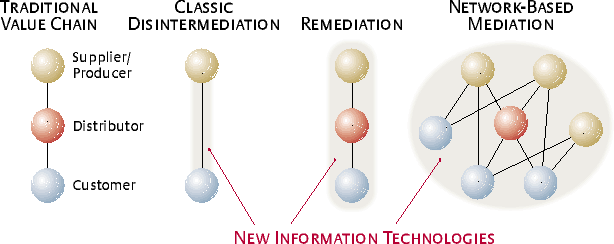The Digital Transformation of Traditional Business
Topics
During the 1990s, companies had vast amounts of funding for new information technologies, or NIT.1 They invested millions of dollars on Web sites, sophisticated software packages, teleconferencing equipment, broadband networks, mobile communications and other digital technologies. Such investments helped them to keep abreast of competitors that were making similar expenditures. Today, many companies are strapped for resources, and they need to be extremely selective about the technologies they fund, deploying NIT in ways that are the most relevant to their businesses and strategic objectives, including their sales and marketing efforts.
What kinds of companies and products can benefit most from the use of NIT? Books and airline tickets sell readily over the Internet whereas automobiles and high fashion clothing do not. Furthermore, what types of business transformations do such investments enable? A company might, for example, use NIT to cut away layers of middlemen, such as distributors, that separate it from its customers (called classic disintermediation). Or, instead of getting rid of middlemen, it might choose to embrace them (remediation). Or it might build strategic alliances and partnerships with new and existing players in a tangle of complex relationships (network-based mediation). (See “Three Mediation Strategies.”)
Three Mediation Strategies
Three Mediation Strategies
In classic disintermediation, NIT is used to eliminate organizations that are seen to be standing in the way of a fast and efficient transaction (that is, cutting out the middleman). In remediation, NIT is used to strengthen existing and new relationships between suppliers/producers, distributors and customers. In network-based mediation, new and established players use NIT to build a network of strategic alliances and partnerships in complex relationships.
All three mediation strategies depend on various factors, such as a product’s customizability and information content. By fully understanding those drivers of NIT, companies can begin to predict the potential transformations of their industries, especially in terms of how products are marketed and sold. To that end, we have developed a systematic framework that identifies which drivers are important for the different approaches of classic disintermediation, remediation and network-based mediation. Using this tool, companies can determine both the optimum ways to transform their businesses and the NIT investments required to accomplish such changes.
References (19)
1. We define NIT as information technologies commercialized in the 1990s as well as the more intensive and extensive applications of earlier information and communication technologies, or ICT.
2. See, for example, the “critical success factors,” which are quite different from our drivers, in J.F. Rockart, “The Changing Role of the Information Systems Executive: A Critical Success Factors Perspective,” MIT Sloan Management Review 24 (fall 1982): 3–13.






Comment (1)
JEAN-FRANCOIS GORE